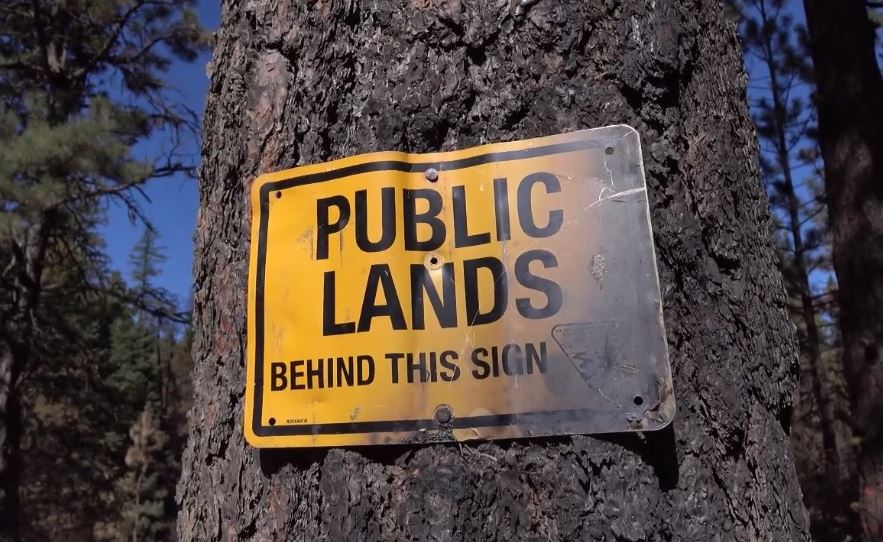In his letter to Bernhardt, Grijalva says the Department will be vulnerable to lawsuits because Grand Junction has a much smaller African-American population (one percent) than Washington, D.C. (47 percent). Employees of color might be uncomfortable moving there, and might feel unwelcome. It is an ironic accusation to level at the BLM, one of the government’s least diverse agencies. Grijalva admits that only 3.5 percent of the agency’s employees are African-American (which he cites as a serious problem), and about 60 percent of them already live outside the DC area.
The Colorado Welcome Mat
Washington insiders’ opposition to moving the BLM to Grand Junction reached a new low last week. House Natural Resources Committee Chairman Raul Grijalva (D-AZ), fired another shot at the Interior Department, still trying to stop the move before it starts. The chairman’s latest letter to Interior Secretary Dave Bernhardt raised a bizarre issue, as a last resort, because none of the other arguments against the move have worked. The office space has been leased and employees have been notified that the move is proceeding as planned. Opponents are beyond desperate.
First they argued that BLM is already one of the most decentralized government agencies, which is true. That does not change the fact that people make better decisions when they live in the area, and deal with the people, most affected by their decisions. Next, Grijalva branded the move as a plan to “hand over public lands to fossil fuel companies.” As if ownership of federal lands has anything to do with where the employees live. Finally, he argued that putting BLM headquarters in Western Colorado will make it easier for local special interests to walk in the door demanding favors. That is true no matter where the headquarters is located, but there are more special interest lobbyists in Washington, D.C. than there are people in Grand Junction.
BLM employees argue that the move will weaken their influence, by making it more difficult for them to talk directly with Congress, the White House, and Interior Department bosses. One retiree confided, “I am simply afraid that if we all lived in Grand Junction, nobody in Washington would pay us any attention.” That is exactly the point. Perhaps national leaders will be forced to pay some attention to western communities like Grand Junction if they live there. Today, they are most attuned to the needs of the DC area, because they live there.
Last July when I talked to a Grijalva staffer about the BLM move, he vowed, “We are going to fight it tooth-and-nail.” When I asked what arguments they might use, he said “Whatever we can think of.” None of their arguments have proven persuasive, so now they have reached the bottom of the barrel. Chairman Grijalva now says moving a government agency to Grand Junction, Colorado is racist.
In his letter to Bernhardt, Grijalva says the Department will be vulnerable to lawsuits because Grand Junction has a much smaller African-American population (one percent) than Washington, D.C. (47 percent). Employees of color might be uncomfortable moving there, and might feel unwelcome. It is an ironic accusation to level at the BLM, one of the government’s least diverse agencies. Grijalva admits that only 3.5 percent of the agency’s employees are African-American (which he cites as a serious problem), and about 60 percent of them already live outside the DC area. Still, for the 41 percent who do live in the DC area, Grijalva insists that the BLM move be put on hold until a “disparate impacts analysis” is completed, showing “how the relocation or attrition of affected staff” would not “disproportionately impact any protected classes of employees.”
The BLM’s Acting Director, William Perry Pendley, was exactly right in his response. He called Grijalva’s letter “insulting in his implications that Westerners… would be unwelcoming to people of diverse backgrounds.” Anyone who thinks Western Coloradans are racists simply do not know them. It is among the world’s least prejudiced places.
I was only in elementary school during the 1960s civil rights marches, southern sit-ins, and race riots. But I remember well how people in Grand Junction simply could not relate to it. The idea of people hating each other with such vitriol because of their color was just not part of our culture. It still isn’t.
Colorado has long been seen as a welcoming place by people of color. In the 19th Century, thousands of black soldiers served in the West, and the Army’s 9th Cavalry was stationed at Fort Garland. Hundreds loved Colorado so much they stayed after their service ended. In the same way, several thousand people of color were temporarily resettled in Western Colorado after Hurricane Katrina displaced them from New Orleans in 2005. Many stayed permanently, finding Colorado more hospitable than their previous hometown. The idea that the Western Slope is hostile to people of color is beyond insulting. It is simply inaccurate.
Race has nothing to do with where BLM headquarters should be. But if the move proceeds, employees of all kinds will find themselves welcome in Western Colorado.
This column originally appeared in the Grand Junction Daily Sentinel December 13, 2019.

See more from Greg Walcher by clicking here
Free Range Report
Thank you for reading our latest report, but before you go…
Our loyalty is to the truth and to YOU, our readers!
We respect your reading experience, and have refrained from putting up a paywall and obnoxious advertisements, which means that we get by on small donations from people like you. We’re not asking for much, but any amount that you can give goes a long way to securing a better future for the people who make America great.
[paypal_donation_button]
For as little as $1 you can support Free Range Report, and it takes only a moment.



